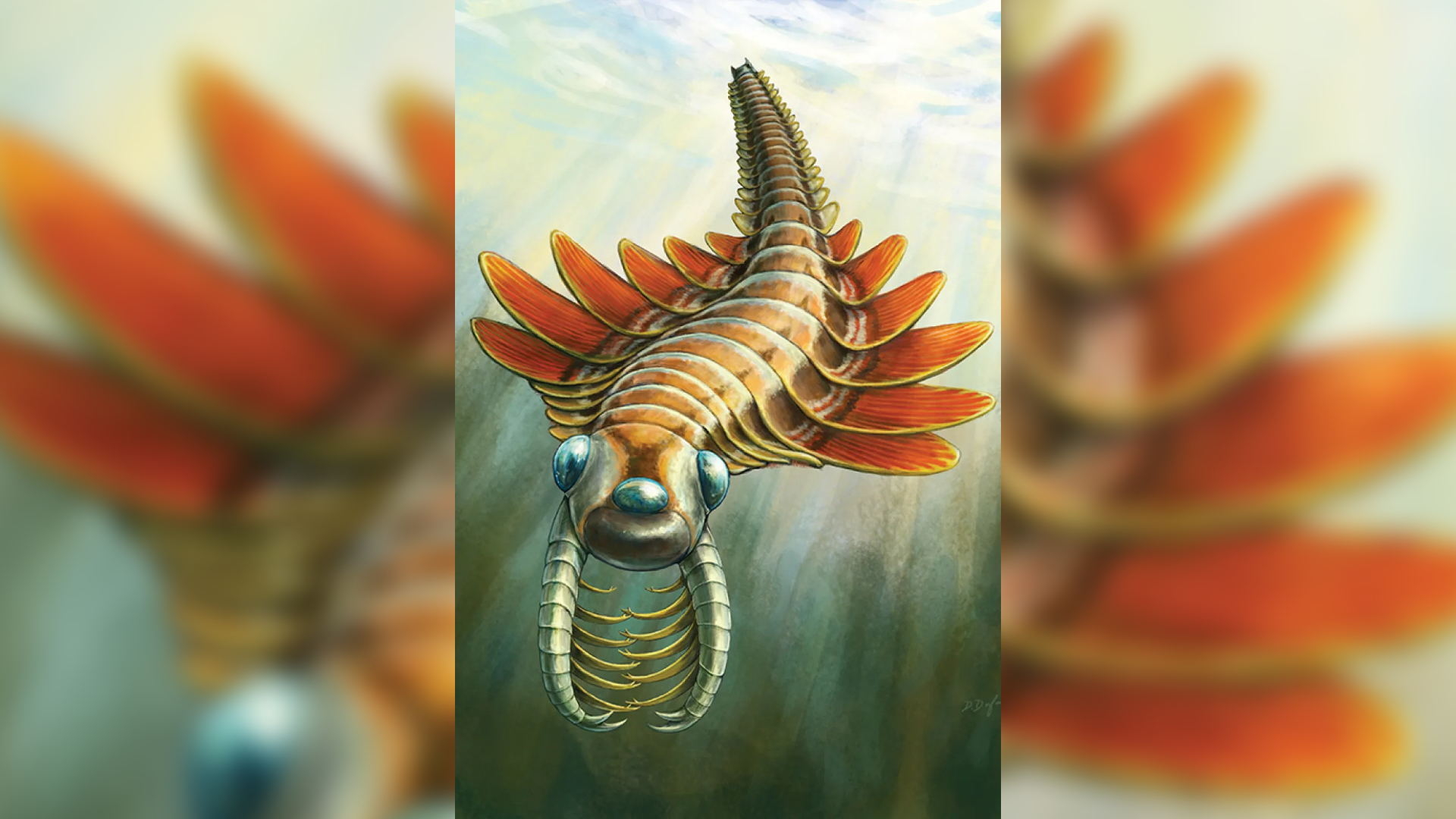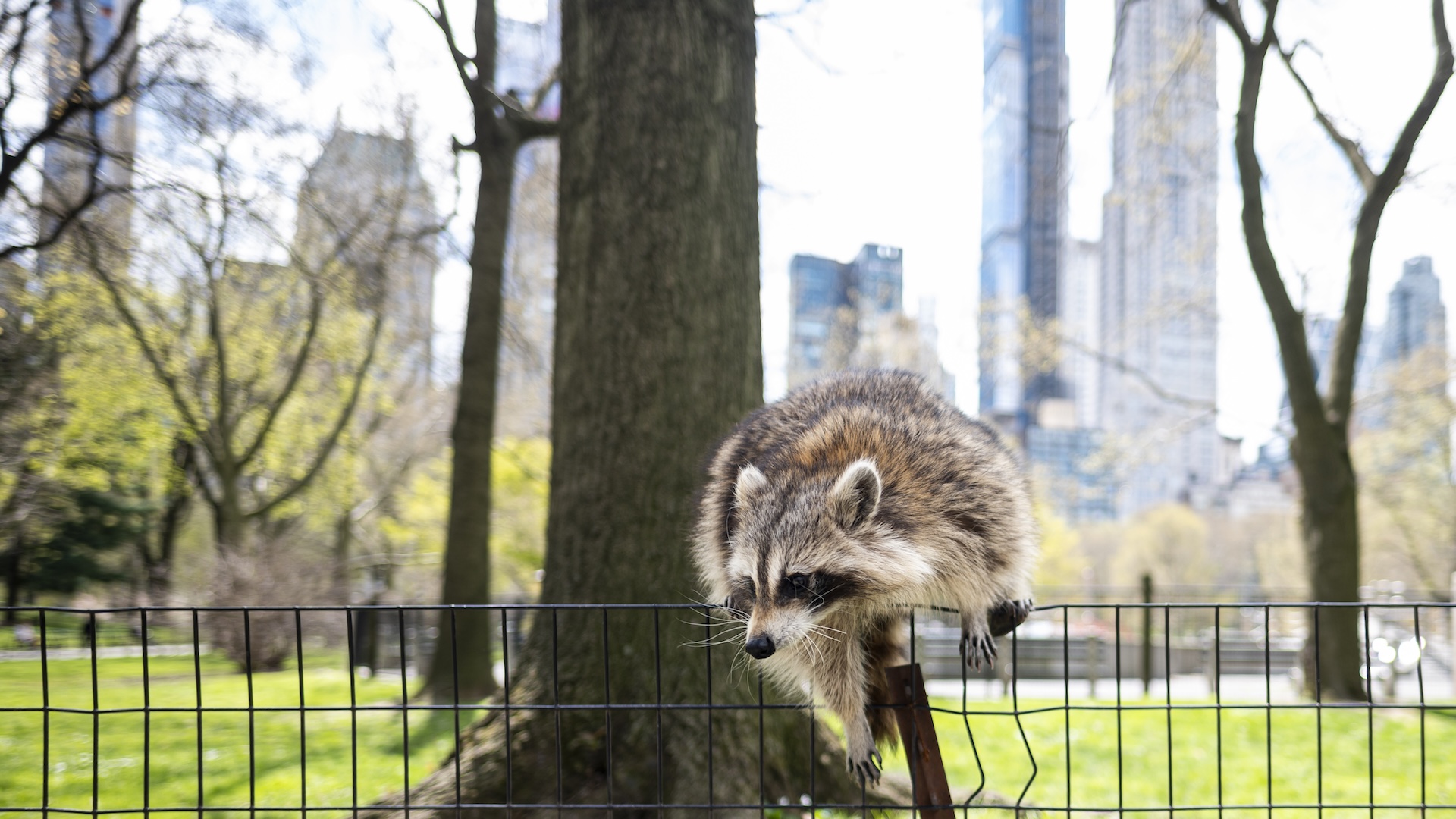Half-a-billion-year-old 3-eyed sea creature dubbed 'Mosura' breathed through big gills on its butt
Researchers have discovered an ancient moth-like sea predator in a treasure trove of museum fossils in Canada. The half-a-billion-year-old creature, Mosura fentoni, reveals that Cambrian arthropods were more diverse than previously thought.

Half a billion years ago, a feisty predator flapped around the primordial seas, hooking prey into its mouth while breathing through long gills on its butt.
Researchers recently discovered this 506 million-year-old creature, called Mosura fentoni, in a cache of museum fossils in Canada. The fossils suggest that these early arthropods were more diverse than previously thought. The team thinks the now-extinct arthropod would have looked a bit like a moth — a distant living cousin — so they named it after Mothra, the fictional giant moth from Japanese cinema.
Whereas Mothra is large enough to battle Godzilla on the silver screen, the real-life M. fentoni was only about the size of a human finger. Despite its small size, this tiny creature represents a huge and rare find for scientists.
The M. fentoni fossils, plucked mostly from the Burgess Shale rock formation in the Canadian Rockies, are so well preserved that they include intricate details of the species' biology, including the creature's nervous system, circulatory system and digestive tract. This is extremely rare for fossils, which scarcely preserve soft tissues, and helps shed light on the evolution of ancient arthropods.
"Very few fossil sites in the world offer this level of insight into soft internal anatomy," study co-author Jean-Bernard Caron, the Richard M. Ivey curator of invertebrate paleontology at the Royal Ontario Museum, said in a statement. "We can see traces representing bundles of nerves in the eyes that would have been involved in image processing, just like in living arthropods. The details are astounding."
The researchers published their findings Wednesday (May 14) in the journal Royal Society Open Science.
Related: Scientists uncover 'inside-out, legless, headless wonder' that lived long before the dinosaurs
Get the world’s most fascinating discoveries delivered straight to your inbox.
Arthropods are a large group of invertebrates with hard exoskeletons, segmented bodies and jointed legs. Today, they make up around three-quarters of all living animals, including insects, arachnids and crustaceans. One of the reasons for their evolutionary success is their specialized body segments. These variable segments have helped arthropods diversify within their groups and ultimately become everything from horseshoe crabs to moths.
M. fentoni belonged to a group of ancestral arthropods called radiodonts, identifiable by shared features like side flaps and head appendages. These invertebrates thrived during the Cambrian period (541 million to 485 million years ago), but their fossils have shown relatively uniform body segments with little variety, until now.
Researchers collected 60 fossils of the newly described species between 1990 and 2022, primarily from the Raymond Quarry, part of Yoho National Park in British Columbia. Many of these specimens had been sitting in the Royal Ontario Museum for years until the authors of the new study took a closer look at them. The team also identified one other specimen in the Smithsonian National Museum of Natural History in Washington, D.C., according to the study.
"Museum collections, old and new, are a bottomless treasure trove of information about the past," study lead author Joe Moysiuk, curator of paleontology and geology at the Manitoba Museum, said in the statement. "If you think you've seen it all before, you just need to open up a museum drawer."
The researchers photographed and scanned the fossils to build a picture of this ancient creature's biology. They found that, unlike other radiodonts, M. fentoni had lots of body segments on its rear, which were lined with gills. The species also had the longest gills relative to body length of all known radiodonts, despite being among the smallest, according to the study.
The team concluded that the back-end gills were most likely a specialized system for respiration; horseshoe crabs, wood lice and some other living arthropods have subsequently evolved a similar system. Researchers aren't certain why M. fentoni needed the long butt gills, but they speculated it was an adaptation to low-oxygen environments or an active lifestyle — possibly a very active reproductive lifestyle — that required greater oxygen consumption. Either way, the discovery highlights that radiodonts were more diverse than previously thought.
"Radiodonts were the first group of arthropods to branch out in the evolutionary tree, so they provide key insight into ancestral traits for the entire group," Caron said. "The new species emphasizes that these early arthropods were already surprisingly diverse and were adapting in a comparable way to their distant modern relatives."

Patrick Pester is the trending news writer at Live Science. His work has appeared on other science websites, such as BBC Science Focus and Scientific American. Patrick retrained as a journalist after spending his early career working in zoos and wildlife conservation. He was awarded the Master's Excellence Scholarship to study at Cardiff University where he completed a master's degree in international journalism. He also has a second master's degree in biodiversity, evolution and conservation in action from Middlesex University London. When he isn't writing news, Patrick investigates the sale of human remains.
You must confirm your public display name before commenting
Please logout and then login again, you will then be prompted to enter your display name.
